Hyundai i10 vs Mazda 3 Hatchback – Which one offers the better deal?
Two cars, one duel: Hyundai i10 meets Mazda 3 Hatchback.
Which one wins in performance, efficiency and value for money? Find out now!
Here’s where it gets real: The technical differences in detail
Costs and Efficiency: Looking at overall running costs, both models reveal some interesting differences in everyday economy.
Hyundai i10 has a convincingly advantage in terms of price – it starts at 14600 £, while the Mazda 3 Hatchback costs 24500 £. That’s a price difference of around 9986 £.
Fuel consumption also shows a difference: the Hyundai i10 manages with 4.90 L and is therefore slightly more efficient than the Mazda 3 Hatchback with 5.60 L. The difference is about 0.70 L per 100 km.
Engine and Performance: Power, torque and acceleration say a lot about how a car feels on the road. This is where you see which model delivers more driving dynamics.
When it comes to engine power, the Mazda 3 Hatchback has a clearly edge – offering 186 HP compared to 90 HP. That’s roughly 96 HP more horsepower.
In acceleration from 0 to 100 km/h, the Mazda 3 Hatchback is clearly quicker – completing the sprint in 8 s, while the Hyundai i10 takes 11.40 s. That’s about 3.40 s faster.
In terms of top speed, the Mazda 3 Hatchback performs somewhat better – reaching 216 km/h, while the Hyundai i10 tops out at 175 km/h. The difference is around 41 km/h.
There’s also a difference in torque: the Mazda 3 Hatchback pulls clearly perceptible stronger with 240 Nm compared to 172 Nm. That’s about 68 Nm difference.
Space and Everyday Use: Whether family car or daily driver – which one offers more room, flexibility and comfort?
Both vehicles offer seating for 5 people.
In curb weight, the Hyundai i10 is decisively lighter – 996 kg compared to 1419 kg. The difference is around 423 kg.
In terms of boot space, the Mazda 3 Hatchback offers distinct more room – 351 L compared to 252 L. That’s a difference of about 99 L.
In maximum load capacity, the Hyundai i10 performs hardly perceptible better – up to 1050 L, which is about 24 L more than the Mazda 3 Hatchback.
When it comes to payload, Mazda 3 Hatchback a bit takes the win – 485 kg compared to 423 kg. That’s a difference of about 62 kg.
All in all, the Mazda 3 Hatchback shows itself to be wins the duel decisively and secures the title of DriveDuel Champion.
It impresses with the more balanced overall package and proves to be the more versatile companion for everyday use.
Hyundai i10
The Hyundai i10 impresses with its compact design, making it an ideal choice for navigating through busy urban environments. Its interior is surprisingly spacious, offering drivers and passengers comfort beyond what one might expect from a city car. The model combines efficiency and practicality, making it an attractive option for those seeking both economy and functionality in their daily commute.
details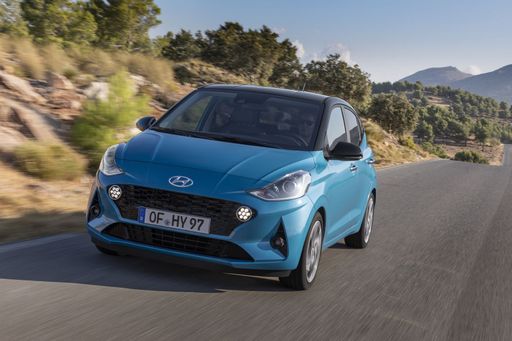 @ hyundai.news
@ hyundai.news
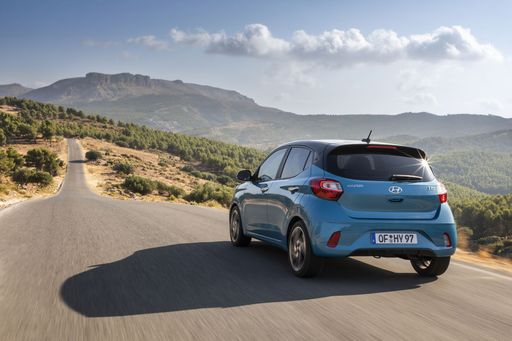 @ hyundai.news
@ hyundai.news
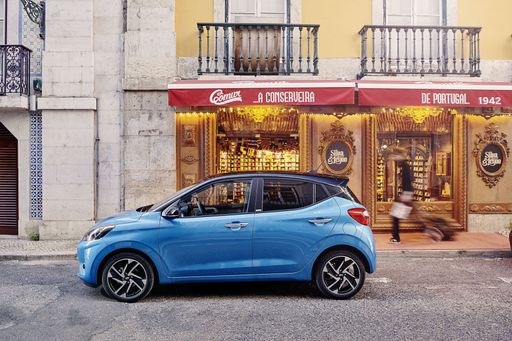 @ hyundai.news
@ hyundai.news
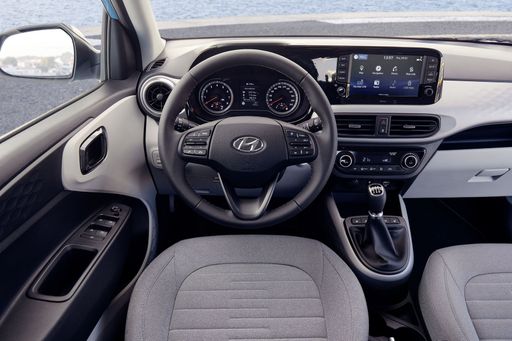 @ hyundai.news
@ hyundai.news
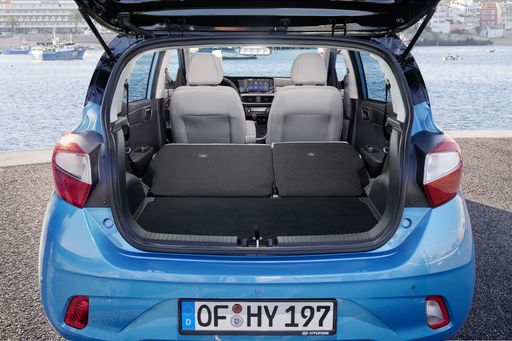 @ hyundai.news
@ hyundai.news
Mazda 3 Hatchback
The Mazda 3 Hatchback presents a sleek and modern design, capturing attention with its streamlined curves and dynamic stance. Inside, the interior showcases high-quality materials and an intuitive layout, providing comfort and ease for both driver and passengers. On the road, this hatchback impresses with its agile handling and responsive performance, making it a practical yet stylish choice for urban and suburban driving.
details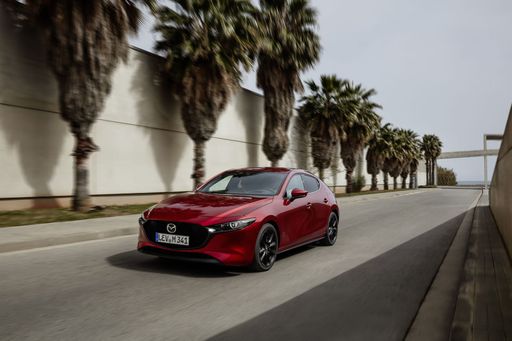 @ de.mazda-press.com
@ de.mazda-press.com
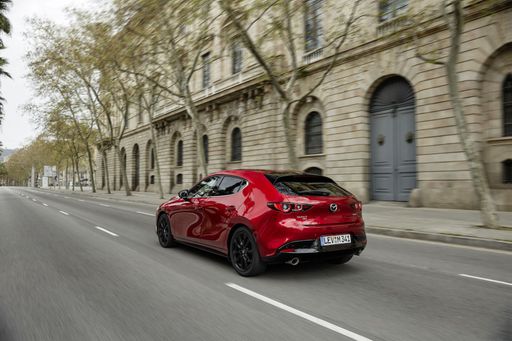 @ de.mazda-press.com
@ de.mazda-press.com
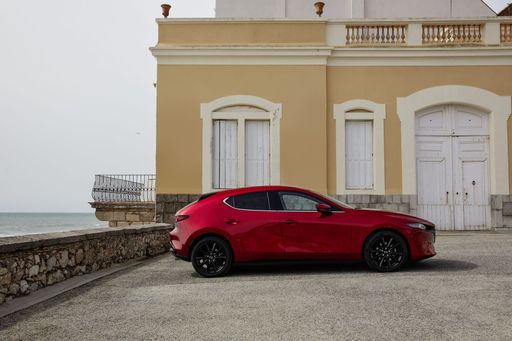 @ de.mazda-press.com
@ de.mazda-press.com
 @ de.mazda-press.com
@ de.mazda-press.com
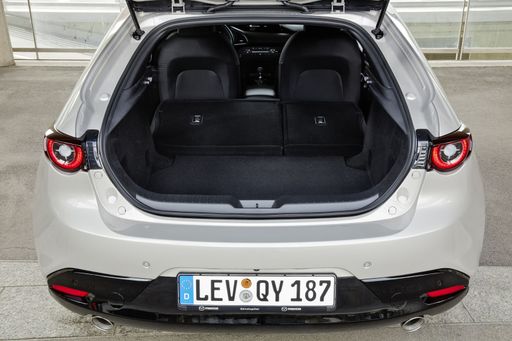 @ de.mazda-press.com
@ de.mazda-press.com

|

|
|
|
|
Costs and Consumption |
|
|---|---|
|
Price
14600 - 19000 £
|
Price
24500 - 35500 £
|
|
Consumption L/100km
4.9 - 5.5 L
|
Consumption L/100km
5.6 - 6.5 L
|
|
Consumption kWh/100km
-
|
Consumption kWh/100km
-
|
|
Electric Range
-
|
Electric Range
-
|
|
Battery Capacity
-
|
Battery Capacity
-
|
|
co2
110 - 124 g/km
|
co2
126 - 146 g/km
|
|
Fuel tank capacity
36 L
|
Fuel tank capacity
48 - 51 L
|
Dimensions and Body |
|
|---|---|
|
Body Type
Hatchback
|
Body Type
Hatchback
|
|
Seats
4 - 5
|
Seats
5
|
|
Doors
5
|
Doors
5
|
|
Curb weight
996 - 1099 kg
|
Curb weight
1419 - 1549 kg
|
|
Trunk capacity
252 L
|
Trunk capacity
351 L
|
|
Length
3670 - 3675 mm
|
Length
4460 mm
|
|
Width
1680 mm
|
Width
1795 mm
|
|
Height
1480 - 1483 mm
|
Height
1435 mm
|
|
Max trunk capacity
1050 L
|
Max trunk capacity
1022 - 1026 L
|
|
Payload
344 - 423 kg
|
Payload
470 - 485 kg
|
Engine and Performance |
|
|---|---|
|
Engine Type
Petrol
|
Engine Type
Petrol MHEV
|
|
Transmission
Manuel, Automatic
|
Transmission
Manuel, Automatic
|
|
Transmission Detail
Manual Gearbox, Automated Manual
|
Transmission Detail
Manual Gearbox, Automatic Gearbox
|
|
Drive Type
Front-Wheel Drive
|
Drive Type
Front-Wheel Drive, All-Wheel Drive
|
|
Power HP
63 - 90 HP
|
Power HP
140 - 186 HP
|
|
Acceleration 0-100km/h
11.4 - 18.4 s
|
Acceleration 0-100km/h
8 - 9.8 s
|
|
Max Speed
143 - 175 km/h
|
Max Speed
199 - 216 km/h
|
|
Torque
93 - 172 Nm
|
Torque
238 - 240 Nm
|
|
Number of Cylinders
3 - 4
|
Number of Cylinders
4
|
|
Power kW
46 - 66 kW
|
Power kW
103 - 137 kW
|
|
Engine capacity
998 - 1197 cm3
|
Engine capacity
1998 - 2488 cm3
|
General |
|
|---|---|
|
Model Year
2024
|
Model Year
2025
|
|
CO2 Efficiency Class
C, D
|
CO2 Efficiency Class
D, E
|
|
Brand
Hyundai
|
Brand
Mazda
|
Is the Hyundai i10 offered with different drivetrains?
The Hyundai i10 is offered with Front-Wheel Drive.
The prices and data displayed are estimates based on German list prices and may vary by country. This information is not legally binding.
